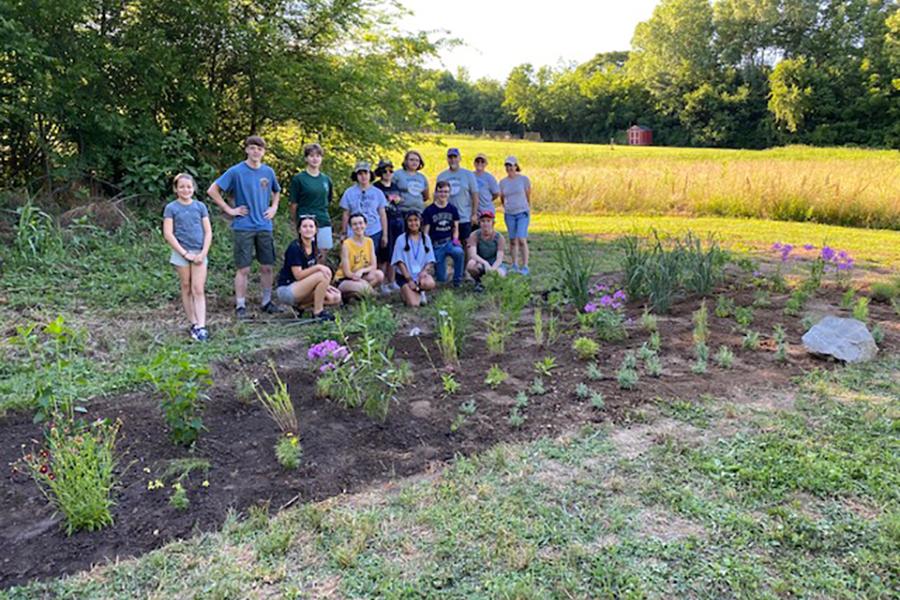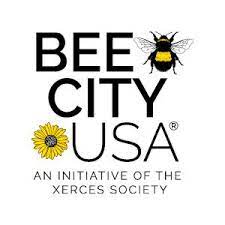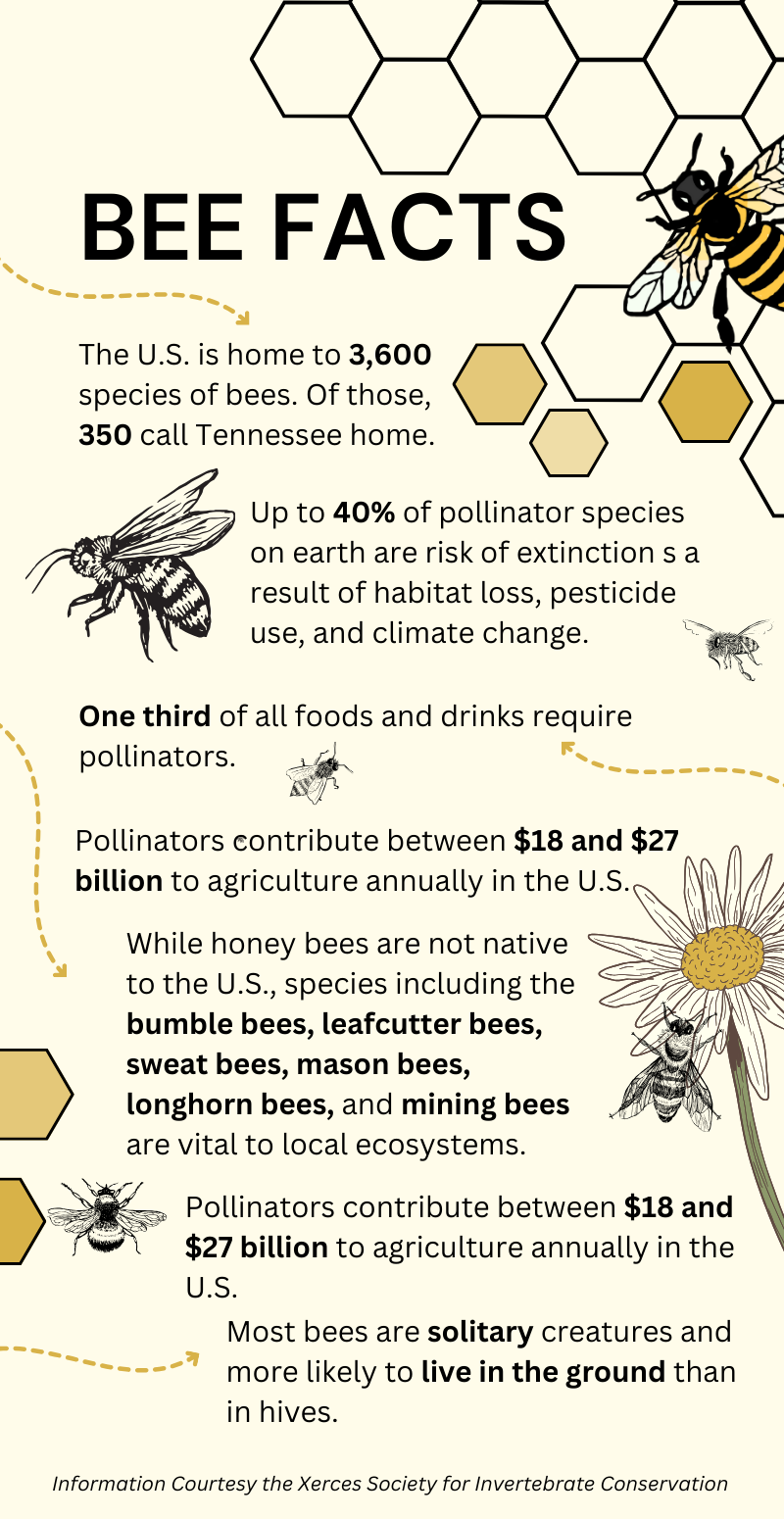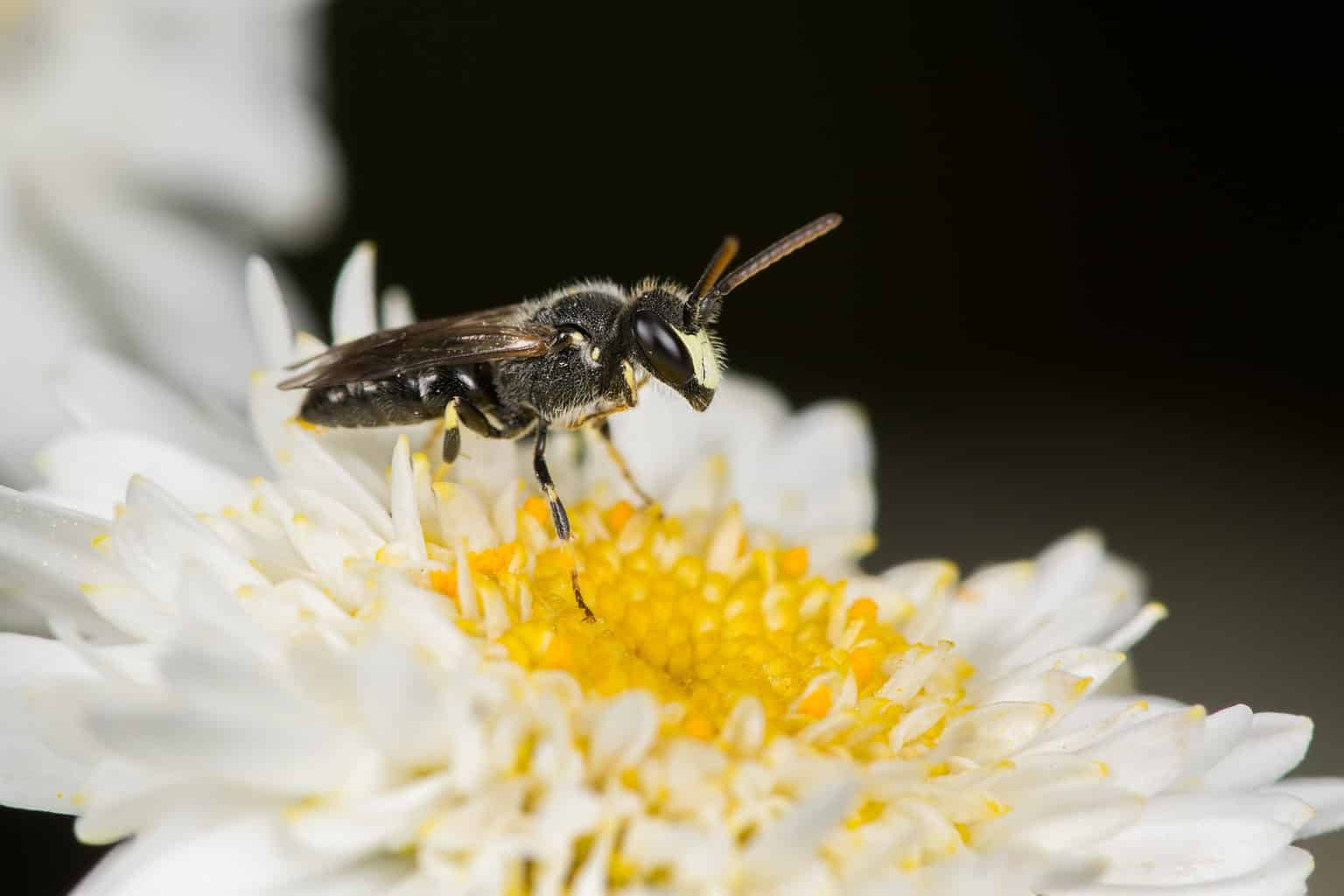Cities can protect pollinator populations with help from Bee City USA

By KATE COIL
TT&C Assistant Editor
 A nationwide initiative is providing Tennessee municipalities with the tools and resources they need to protect pollinators in their own communities.
A nationwide initiative is providing Tennessee municipalities with the tools and resources they need to protect pollinators in their own communities.
Bee City USA, an initiative of the Xerces Society for Invertebrate Conservation, is helping municipalities to protect local habitats, agriculture, and economies by giving them the tools they need to conserve bee populations and educate the public about pollinator loss.
The program began in Asheville, N.C., and soon spread nationwide. It was taken under the umbrella of the Xerces Society in 2018 after the retirement of founder, Phyllis Stiles. To date, there are six Tennessee municipalities who participate in the program: Bell Buckle, Cleveland, Lookout Mountain, Thompson’s Station, and Walden.
Laura Rost, national coordinator for Bee City USA and Bee Campus USA, said participation in the initiative can help further steps many cities are already taking to protect pollinators.
“Many times, there is already a great effort happening in the community to preserve pollinators,” she said. “This is a great way to recognize those efforts, come together, and make those efforts even better. Our intention with this program is progress, not perfection. We are looking for incremental improvement. You may have a community garden but can start planting more native wildflowers in that garden that will increase pollinators and food production while reducing pests. Sometimes it’s just leaving the weeds over winter at the park to help nesting bees and butterflies.”
 To participate, municipalities must establish a Bee City committee, create or enhance pollinator habitats, reduce the use of pollinator-unfriendly pesticides, host a pollinator awareness event, maintain an online presence for their Bee City affiliate, and incorporate pollinator-conscious practices into their policies.
To participate, municipalities must establish a Bee City committee, create or enhance pollinator habitats, reduce the use of pollinator-unfriendly pesticides, host a pollinator awareness event, maintain an online presence for their Bee City affiliate, and incorporate pollinator-conscious practices into their policies.
Bee City USA and the Xerces Society offer resources to help municipalities achieve these goals from providing model ordinances to webinar trainings to promotional and outreach materials to having more than 80 staff members nationwide experts ready to consult on topics like pollinator-safe pest management, farming, native flora, and community coordination. Cities also receive customized signage to promote their participation in Bee City USA.
“We have a pretty simple approach: we are asking people to plant pollinator habitats, reduce pesticide usage, and conduct outreach,” Rost said. “Beyond that, each city gets to make their Bee City their own. You get to build the commitments into existing events or create new events. You can take advantage of local talent and enthusiasm. Cities don’t have to figure it out all on their own, and they aren’t receiving a grade on what they do. We are just here as a resource if they want to know ways they can make their plans even better.”
Rost said Bee City wants municipalities to make the initiative their own and find ways to fit it into their individual communities. She said cities are always finding new and creative ways to make Bee City their own.
“It’s a way to celebrate your city’s successes with something positive and constructive anyone can participate in it. We want cities to focus it to their interests. Some may focus more on parades and public arts or businesses involved with pollinators like meaderies or breweries. We have cities who have done festivals, pub crawls, and even a wrestling match. It really runs the gamut.”
Micah Wood, Thompson’s Station community and economic development director, said involvement in Bee City USA has allowed the town to forge relationships in the community.
“It really lined up things Thompson’s Station was talking about, especially being a good steward of the environment, and our parks board was really active on preservation,” Wood said. “This worked on conservation of the environment and was a natural fit for our community. Our initiative has been more parks oriented, and we have done a couple of service projects community members have done to create pollinator gardens. We also have a community garden where people can rent out their own plot of land for gardening, which is near that. It helps the bees do their thing in that area and is great for the community garden.”

The resources provided by Bee City USA also make it an easy initiative for a town of less than 8,000 residents and a limited municipal staff to take part in. Gardening clubs, scout groups, civic organizations, colleges, and other community groups are often the best cheerleaders and champions for Bee City initiatives.
“Some other organizations, you have to go through a lot of things that are onerous and time-consuming for staff,” Wood said. “Bee City leaves it open for what your community wants to make of it. We were able to bring this out to our community, tell them we had to take on a work project every year to focus on pollinator conservation, and then let the community come to us with what they want to. There is a lot of flexibility to it, and it is very easy on our staff. The community is great about taking the initiative in what they want in their parks. It’s a great community-builder.”
Wood said communities of all sizes can reap multiple benefits from participating in the program.
“I would encourage municipality to look at this program, because it is a great program,” he said. “Bees have had a tough time lately, so this is something we can do for them. We wouldn’t be here without pollinators. Think about who is going to serve on the board or a person who is the champion for this and make sure they have buy-in. And because this is a part of a larger network of communities, you can learn from other communities. I would recommend for any size community to get involved.”
Overall, Rost said the initiative is a way for municipalities to make a global impact within their city limits with options like bioswales, native gardens, street trees, community gardens, rain gardens, and green infrastructure. Bringing in bees also brings in other important pollinator species like butterflies and birds.
“Pollinator conservation can be done by anyone,” Rost said. “Cities themselves can be incredible pollinator habitats. We can create steppingstones of habitat to create coordinators within a city. We have found that many cities have quite a bit of pollinator species diversity. Many of these species don’t need a huge amount of habitat to survive, so even a small amount of pollinator habitat can create a small steppingstone. By integrating pollinator habitats into our cities, we not only create healthy, robust pollinators, but it really beautify our cities.”
For more information on how to become a Bee City USA, click here.

